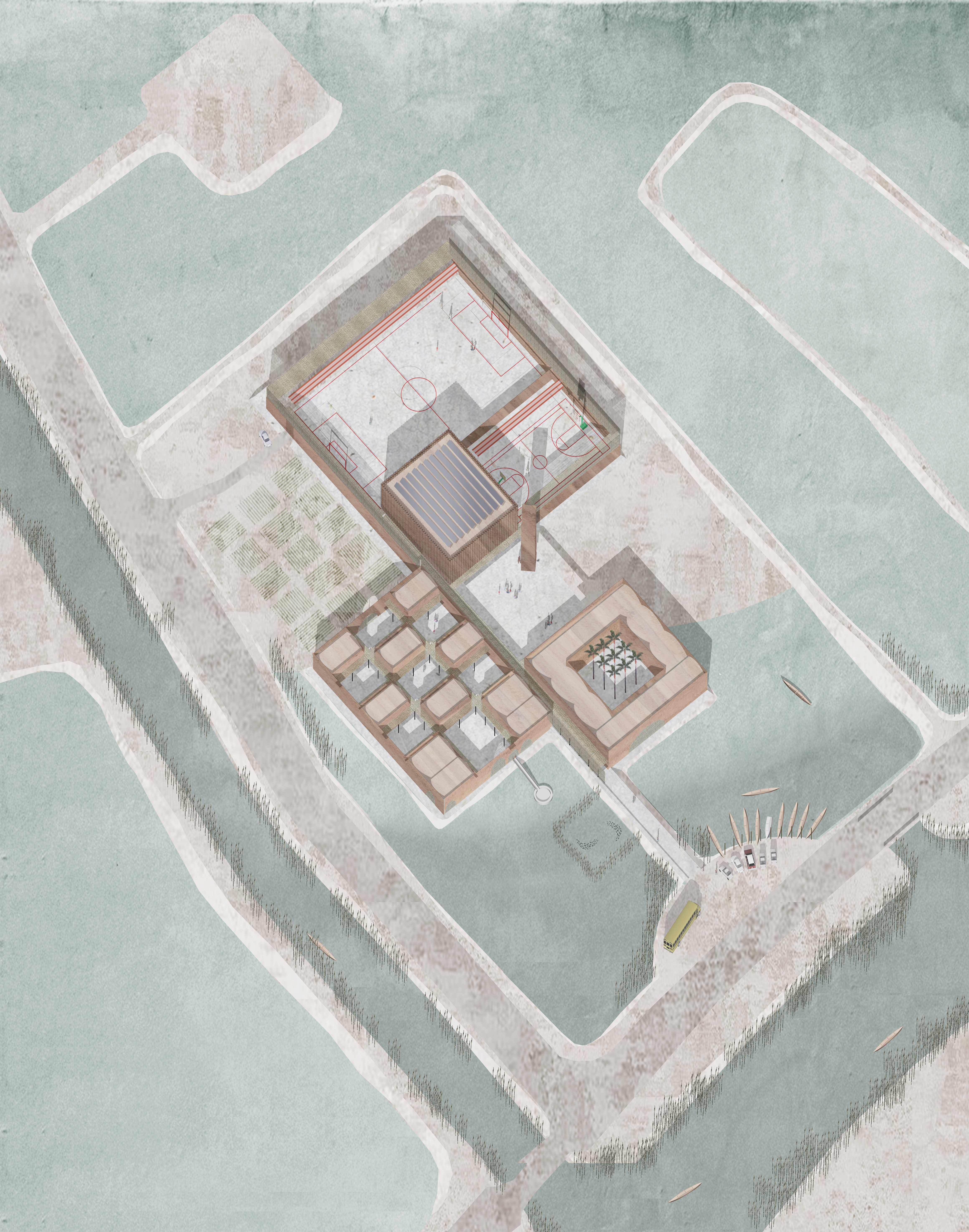Three islands
Competition proposal, 2018
description
Localisation
Les marais mésopotamiens sont chargés d’un passé vernaculaire et mythologique à garder en mémoire. Une fois paradis pour certains, cet endroit mythique a souffert récemment d’un désastre écologique et a fait face à la désertion de ses résidents humains et animaux.
Nous prenons l’opportunité d’un projet architectural pour explorer les aspects traditionnels et futurs de la vie dans les marais mésopotamiens, en mettant en valeur la compréhension de l’environnement.
Connexion insulaire
Le site est remodelé pour imiter ses voisins directs, en créant une île, protégée des hautes eaux et connectée à la route. Dans le cas présent, nous avons créé trois îles connectées pour trois conditions différentes : le public, l’enseignement, et le sport.
Hors-les-murs
L’école est organisée de façon à ce que les activités “hors-les-murs” soient encouragées : des ateliers ponctuels dans les petites cours entre les salles de classe, l’observation des oiseaux depuis la tour, l’observation des poissons depuis la plateforme, la pousse des plantes derrière l’école, etc. Les croisements entre les classes, et entre les îles, et au delà, invite à l’exploration, à l’appropriation, pour stimuler les changements d’état.
Technique
Nous utilisons les techniques et matériaux locaux, adaptés à l’échelle du projet, d’inspiration Mudhif. Les qualités essentielles de l’habitation traditionnelle sont prises en compte, comme la ventialtion transversale et la lumière filtrée, réinterprétée pour un usage spécifique, ou bien l’utilisation d’un ciment mélangé avec de l’argile local des marais sur un coffrage de roseaux tressés.
Locality
The mesopotamian marshes are charged
with a mythological and vernacular background not to be forgotten. Once
paradise for many, the mythical place recently suffered from an ecological
disaster and faced critical desertion of its human and animal inhabitants.
We take the opportunity of an
architectural project to explore traditional and future aspects of living on
the mesopotamian marshes, enhancing the understanding of the environment.
Connecting islands
The site is remodeled imitating the way
of its direct neighbours : shaping the site in order to create an island
protected from the overflow and connected to the road. In this case, we created
three connected islands for three conditions : public, teaching and sport.
Infinite adaptations and different layouts can be imagined for other uses.
Out-of-the-box
The school layout is organised so
“out-of-the-box” activities are invited to happen : workshops in the small
yards between the classrooms, observing birds from the tower, observing fishes
from the platform, growing plants behind the school, etc. The crossing between
rooms, between islands and beyond invites to exploration, to appropriation, to
a stimulating change of state.
Technique
We use local technics and materials,
adapted to the scale of the project, inspired by the traditional Mudhif.
Essential qualities of traditional living are embraced, like cross-ventilation
and filtered light, reintroduced in the proposed typology, or using cement
mixed with local clay from the marshes on a formwork made of bunches of reeds.










